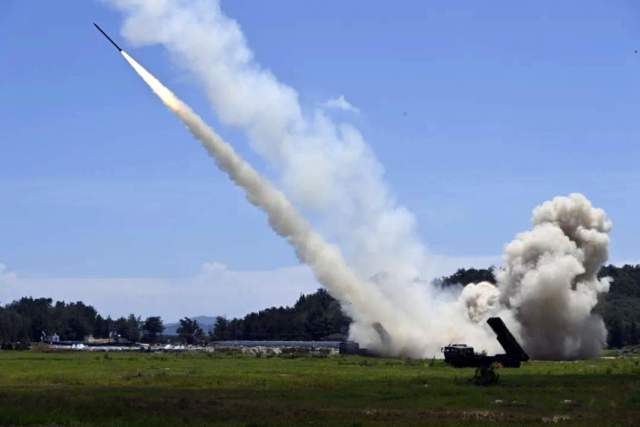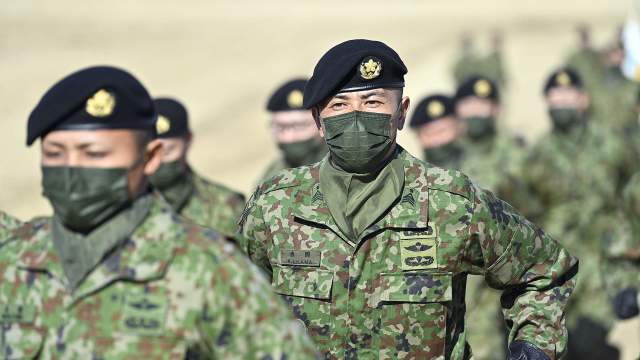Why is the country following the path of militarization and how serious a threat Tokyo's growing appetites pose to its neighbors
The Japanese Defense Ministry has requested the largest budget in history — over 7.7 trillion yen ($52.9 billion). These funds are planned to be used to create a permanent joint headquarters of the self-defense forces, which will improve the coordination of the Japanese military from different types of troops both among themselves and with the Indo-Pacific command of the United States. In addition, the money will be spent on the creation of two new destroyers equipped with the Aegis system, the development of a missile program and an increase in ammunition stocks that will allow the country to wage a protracted war. The need to strengthen Tokyo's defensive capabilities is motivated by the threat of China and the DPRK and the considerations that Asia should not become "the next Ukraine." How much the militarization of Japan threatens regional players, including Russia, is in the material of Izvestia.
All at once
The amount of 7.7 trillion yen that the Japanese Defense Ministry requested from the government for the fiscal year 2024 turned out to be 12% more than the last budget, also a record high.
One of the items for which the Ministry found it necessary to increase funding was the missile program. Following Tokyo's recent decision to obtain "means to strike back" at suspected enemy bases, the Defense Ministry decided to accelerate the introduction of long-range missiles of domestic production. And for this purpose, it requested money to increase the range of the Type-12 anti-ship missile from 200 km to 1000 km, as well as funds for the development of high-speed glide weapons (high-speed glide weapons) to protect the remote southwestern islands of Okinawa Prefecture, including those located near Taiwan.

Photo: commons.wikimedia.org
Image source: iz.ru
Not bad themselves, the Japanese continued to hope for others: the list of planned budget purchases included the purchase of counter-strike funds from the United States, including Tomahawk cruise missiles, as well as funds for a joint fighter production program with Great Britain and Italy.
Tokyo also took care of strengthening security at sea. Thus, the budget included an amount of 380 billion yen for the construction of two new destroyers equipped with the Aegis system, which Tokyo initially refused in 2020 for reasons of high cost. In addition, the same destroyers, the first of which will be commissioned in 2027, decided to equip Glide Phase interceptors designed to destroy approaching hypersonic weapons during its uncontrolled flight phase. The cost of their development was estimated at 75 billion yen.
The third section of the "shopping list" of the Japanese Ministry of Defense touched upon means for fighting and evacuation in case of an emergency (such as additional ships and helicopters) and strengthening the potential for their rapid deployment near the southwestern islands. The importance of being vigilant in this area, and not only in words, became apparent after five Chinese missiles "flew" into nearby waters during the military exercises of the PRC near Taiwan last year.

Photo: Global Look Press/The Eastern Theater Command Army
Image source: iz.ru
The military decided to direct the most generous share of the estimated budget — 3.1 trillion yen — to strengthen the "stability" of the self-defense forces so that the country's armed forces would be able to withstand any protracted conflict with dignity. To do this, the Ministry of Defense called for solving the problem of the shortage of both ammunition and earthquake-resistant infrastructure.
Well, the main innovation was the idea to reorganize the self-defense forces, creating a unified management structure for land, sea and air units. And to build a new headquarters for this in the Tokyo district of Ichigaya, where the Ministry of Defense itself is located. Until now, representatives of the three types of troops in the event of an emergency formed only temporary joint operational groups, which created a lot of difficulties in situations requiring very rapid response. In addition, this led to insufficient coordination between the Japanese military and the US Indo-Pacific Command, which oversees US military operations in the region.
With the advent of a permanent joint headquarters, which will be staffed with 240 officials under the leadership of one commander reporting directly to the Minister of Defense of Japan, this gap will be corrected.
Who are they defending against
The attitude of the Japanese government to strengthen the means of self-defense appeared, of course, not yesterday. The initial motive for this was the growing North Korean threat, as well as the rapid growth of neighboring and not particularly friendly to the Japanese China and the strengthening of its military power. And with the beginning of the conflict in Ukraine, the country's Prime Minister Fumio Kishida began to actively replicate the idea that tomorrow today's Ukraine "can become East Asia," hinting at a possible Chinese attack on Taiwan. By the way, for the same reasons, Taipei itself has been increasing the defense budget in recent years, having planned to spend $19 billion, or 2.5% of its GDP, for military purposes next year.
Against the background of growing conflict in the region, fears began to appear more and more often inside Japan that the national self-defense forces are unable to maintain the security of the country and its residents in the face of regional and global challenges. The first outcome of the discussions on how to rectify the situation was the adoption by the authorities in December last year of three key documents on Japan's defense and security. They envisaged, among other things, a gradual increase in defense spending to the level of 2% of GDP, which, by the way, corresponds to NATO targets. And the new national security strategy adopted then for the first time prescribed the possibility of striking enemy bases.

Photo: Getty Images/Anadolu Agency/Contributor
Image source: iz.ru
This, of course, was met with extreme criticism by Pyongyang and Beijing, who in recent months have repeatedly accused Tokyo of militarizing the entire region and sharply rejecting the principles of pacifism spelled out in the country's Constitution.
However, according to Masahiro Matsumura, professor of international politics and national security at St. Andrew's University in Izumi, Tokyo's planned measures should not be considered a decisive departure from Japan's exclusively defensive position, which it adhered to all previous years.
— They rather reinforce a long-standing approach and capabilities. The shift will become apparent only when Japan acquires significant capabilities to project offensive power, including long-range cruise missiles and possibly ballistic missiles with conventional warheads. While the changes have not yet come. And it's not worth reacting too sharply, at least at the moment," the Japanese expert told Izvestia.
Not so scary damn
Unlike the Chinese and North Korean threats, Tokyo did not openly talk about the need to defend itself from Russia, relations with which have rapidly deteriorated over the past couple of years. Although at the same time they stated that the Russian Federation is an "immediate threat to Europe", and expressed concerns about Moscow's strategic interaction with Beijing.
Such formulations were, in particular, spelled out in the White Paper on Defense issued by Japan at the end of July. Then, in response, Moscow, through the mouth of the representative of the Ministry of Foreign Affairs Maria Zakharova, said: unlike the far-fetched "Russian threat" in Europe, "it is Tokyo's actions that pose a direct real danger to peace and stability in Northeast Asia and in the Asia-Pacific region as a whole." In particular, the country's revision of the pacifist provisions of the Constitution, a drastic increase in military spending and the country's involvement in forced remilitarization.

Photo: Getty Images/Tomohiro Ohsumi/Stringer
Image source: iz.ru
However, according to experts, despite all the negative rhetoric, Japan does not consider Russia as a threat. As Masahiro Matsumura noted, Russia will be taken into account in Japan's military-strategic calculations not by itself, but only in combination with its possible operational unification with China or with North Korea with the support of China.
— Japan has been underfunded militarily for a long time. They have a serious backlog in equipping the armed forces with modern means of conducting military operations, there are not enough ammunition and people. But this does not mean anything for Russia, we can not fuss, especially Tokyo does not pay serious attention to the northern direction," Alexander Panov, professor of the MGIMO Department of Diplomacy, who formerly headed the Russian embassy in Japan, told Izvestia. — The only thing that worries the Japanese is our military cooperation with the Chinese.
However, in the future, with the development of Japan's defensive capabilities, not only China, but also the Russian Far East will fall within the range of their military systems. And this will certainly force Moscow to the inevitable retaliatory build-up of its military potential in the region.
Natalia Portyakova

